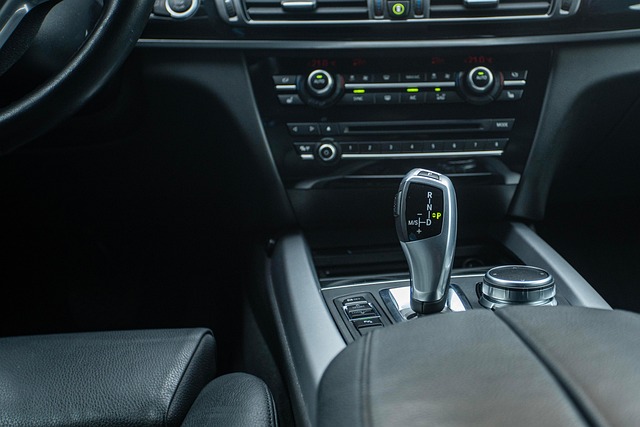Looking to register your car in California? This comprehensive guide will walk you through the process, from understanding key requirements to securing your registration. We’ll delve into gathering essential documents, including a crucial VIN verification step. By following these steps, you’ll efficiently navigate the California DMV process, ensuring your vehicle is legally registered and ready to hit the road. Remember, accurate VIN verification is a vital part of the registration journey.
- Understand California Car Registration Requirements
- Gather Necessary Documents for Vehicle Registration
- Perform VIN Verification Step-by-Step
- Submit Application and Fees at DMV Office or Online
- Receive Your California Registration Plate and Documentation
Understand California Car Registration Requirements

Before registering your car in California, it’s crucial to understand the state’s specific requirements. One key aspect is ensuring your vehicle has undergone a valid VIN verification process. This involves checking the Vehicle Identification Number (VIN) against the manufacturer’s records to confirm its authenticity and specifications. In California, this step is essential for issuing a registration certificate.
A mobile VIN verifier or vin inspection service can streamline this process by providing on-site or remote verification, making it convenient for both individuals and car dealerships. This modern approach saves time and effort compared to traditional methods, contributing to a smoother car registration experience in California.
Gather Necessary Documents for Vehicle Registration

Before you start the registration process, make sure to gather all the essential documents required by the California Department of Motor Vehicles (DMV). This includes your vehicle’s Registration Application (Form DMV 7016), which can be obtained online or in person. One crucial document is the Vehicle Identification Number (VIN) verification report. You can conduct a mobile VIN inspection to obtain this, as many reputable services offer convenient and accurate VIN verifications right from your smartphone. This step ensures that your vehicle matches the information on file with the DMV.
Additionally, you’ll need proof of insurance, which displays the policy number and effective dates, along with the required registration fees. Other necessary items include a valid driver’s license or state-issued ID card and, if applicable, documentation regarding any lien or security interest on the vehicle. Having these documents ready will streamline the registration process and help avoid delays at the DMV.
Perform VIN Verification Step-by-Step

To begin the process of registering your car in California, performing a VIN (Vehicle Identification Number) verification is essential. This step ensures that your vehicle’s details match the information provided by the manufacturer. Here’s a straightforward guide to help you navigate this crucial part:
1. Access the Required Tools: First, you’ll need access to your vehicle’s VIN. This unique code can usually be found on the vehicle’s registration certificate or in its manual. If you have a mobile vin inspection or use a mobile vin verifier app, you can quickly retrieve the data by scanning the car’s barcode.
2. Verification Process: Next, compare the VIN with the details listed on the California Department of Motor Vehicles (DMV) website. This step ensures accuracy in the vehicle’s make, model, year, and other specifications. If there are any discrepancies, you may face issues during registration. By using a reliable mobile vin verification service, you can get real-time feedback on whether your VIN matches the state’s records, making this process faster and more convenient.
Submit Application and Fees at DMV Office or Online

To register your car in California, a key step is submitting the necessary applications and fees. You have two options for this process: visit a DMV office or complete it online. If you choose to go in-person, ensure you bring all required documents, including proof of ownership and identification. The staff at the DMV will guide you through the process, which involves verifying your vehicle’s identity using its unique VIN (Vehicle Identification Number). This is crucial for ensuring the accuracy of the registration.
Online registration offers a convenient alternative, allowing you to submit your application and pay fees digitally. Many services now provide mobile VIN verification, making it easy to check your vehicle’s history and ensure it meets California’s requirements before initiating the registration process. A vin inspection, whether in-person or through a mobile service, is an essential step to streamline and secure your car’s registration.
Receive Your California Registration Plate and Documentation

After submitting your application, it’s time to receive your California registration plate and the necessary documentation. The California Department of Motor Vehicles (DMV) will process your request and send you the required materials. This typically includes a license plate, registration card, and a confirmation of your vehicle’s VIN verification.
Ensure that all details on the documents match your information precisely. If you opt for a mobile VIN inspection or verification service, these steps can be even smoother. Such services allow for faster processing by conducting the VIN inspection remotely, streamlining the overall registration process.
Registering a car in California involves understanding key requirements, gathering essential documents, successfully completing a VIN verification process, and submitting applications with associated fees. Once approved, you’ll receive your California registration plate and necessary documentation, marking a seamless transition for your vehicle into the Golden State’s automotive landscape. Remember, proper registration ensures your vehicle complies with legal standards and facilitates smooth driving experiences.
